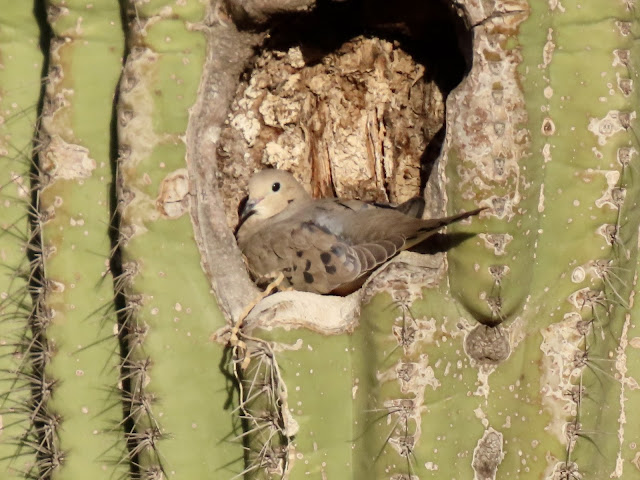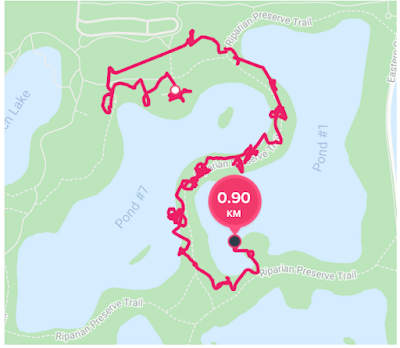Wednesday, March 2, 2022
Our Pueblo Community Birders' good fortune began when Judy C. and Gloria K. pulled into a parking space at Gilbert Water Ranch. In their space stood a ROSY-FACED LOVEBIRD!!
At about 7:30 a.m., five of us (Hinde S., Glenda J., and myself in addition to Judy and Gloria) headed to Pond 7, the trees around the pond and the lawn and trees around us. Not nearly as populated as it often is, the pond still got our list off to a good start with birds we would see off and on all day long: BLACK-NECKED STILT, AMERICAN AVOCET, NORTHERN SHOVELER and PIED-BILLED GREBE.



At 48°F, it was a bit chilly for the warblers to be out and about on the 1/7 Trail. By the time we finished up 3.5 hours later, we didn't return to that trail that may well have provided us with some good sightings. We'll catch them next time!
One good thing about the layout of the post-sewage treatment water ponds is that trails enable birders to see well enough with binoculars to cover the whole pond.
Glenda, wearing her Fitbit, showed us later that it tracked us for a short time before its battery timed out. Birders follow the sounds of the birds; we don't walk in a direct line, Fitbit!
Their color highlighted by the sun, CINNAMON TEAL (12) looked especially gorgeous today. Drake below; both drake and hen together in second photo.
While we never spotted the OSPREY (below) in the air, it remained perched or out of sight during our birding time.
 Rarely do I take the time to photograph our most resident birds. On this day, I managed to document a few of them, below.
Rarely do I take the time to photograph our most resident birds. On this day, I managed to document a few of them, below. EUROPEAN STARLING
EUROPEAN STARLING MOURNING DOVE presumed on nest in saguaro cactus (it carried nesting material)
MOURNING DOVE presumed on nest in saguaro cactus (it carried nesting material) Pair of MALLARD resting with eyes open
Pair of MALLARD resting with eyes openSo, all in all, with a tally of 54 species, each of us was delighted to have experienced another very good day in the field.
Until next trip.....
Click on link below to view our eBird Report:
View this checklist online at https://ebird.org/checklist/S104035097







No comments:
Post a Comment